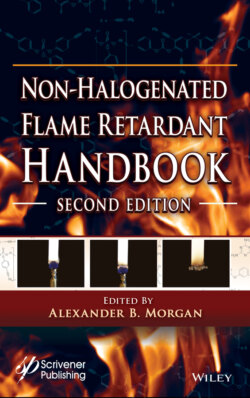Читать книгу Non-halogenated Flame Retardant Handbook - Группа авторов - Страница 17
1.3.2 United States (Federal vs. State)
ОглавлениеIn the United States (US), federal government regulations overrule state regulations. However, if there is no specific federal regulation on a particular topic or chemical, then state regulations apply. This can mean that a product sold in the US could have to meet 50 different state regulations if they are different. Currently, most chemicals are regulated by the Toxic Substances Control Act (TSCA, 1976) which was “updated” by the Frank R. Lautenberg Chemical Safety Act for the 21st Century in 2016. Under TSCA, only very few chemicals were banned and it generally took many years. Regarding flame retardant chemicals, there have been voluntary phase outs of brominated diphenyl ethers in the US due to rulemaking and agreements with the US Environmental Protection Agency (EPA), and some scrutiny of hexabromocyclododecane (HBCD), [44–49]. The US EPA set up a workplan on flame retardants already in 2012 but with slow progress. In March 2019 they concluded TCEP, TBBPA and TPP as “high priority substance” candidates for risk assessments.
In addition to these regulatory workstreams, from 2005 to 2015, the US EPA did run a serious of extensive Design for Environment (DfE) projects which evaluated alternatives to the legacy brominated flame retardants pentabromo- and decabromo diphenylether, hexabromocyclo dodecane and tetrabromo bisphenol-A [50]. The conclusion was that often halogen free alternatives exist with a better environmental and health profile. Furthermore, in 2017 the US Consumer Product Safety Commission (CPSC) voted to initiate rulemaking based on a petition to protect consumers from “toxic” flame retardant chemicals commonly referred to as organohalogens (OFRs), under the Federal Hazardous Substances Act [51]. The initiative refers to children’s products, furniture, mattresses, and electronic device casings. CPSC further advised setting up a Chronic Hazard Advisory Panel to further study the effects of OFRs as a class of chemicals on consumers’ health. The petition lists 24 organohalogens including decabromodiphenyl ether and several chlorinated phosphate esters, believed to be toxic, that tend to migrate out of products, and can bioaccumulate.
At the state level however, there has been a lot of regulatory movement to ban flame retardant chemicals by broad chemical class, rather than by specific molecule. Most of the bans are focused around keeping flame retardant chemicals out of mattresses and furniture, but some bans on manufacture and use of flame retardant chemicals are broader in scope than just furniture and mattresses. The wide range of state regulations is far too much to cover in this chapter, and a reasonable summary of each rule with links to each state law is available online [52]. That being said, the emphasis of most state laws is to ban flame retardants by class (halogen, phosphorus, nitrogen, etc.) in specific consumer products (mostly furniture and mattresses) rather than by specific chemistry. If TSCA change does occur which lists particular flame retardants as safe/not safe to use, that TSCA change would overrule all of the individual state laws. Otherwise, it is highly recommended that material scientists work with their respective regulatory experts if they are planning on using any flame retardant chemical for products in the US, whether halogenated or not. As of the writing of this chapter, the situation is still very uncertain how these state laws will move forward, or if they will get challenged and found to be unworkable by generating broad bans of chemical classes vs. specific negative PBT profile chemicals.
